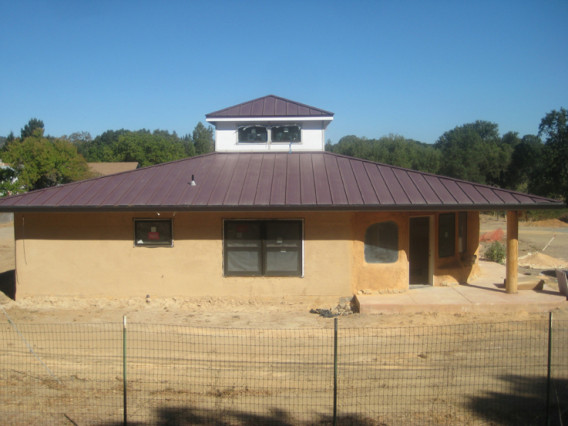In a recent article on Indian Country Today Media Network, journalist Nate Seltenrich covered the sustainable building initiatives of several Native American tribes who were the country’s “original green builders.” Through efforts to improve upon substandard housing and economic hardships, indigenous populations are returning to traditional methods of home construction while incorporating modern technologies. Contemporary sustainability calls tribal members back to their cultural heritage and opens up avenues for attainable home ownership and lower energy costs, with the potential to revitalize communities.

Two prototype homes built on the Pinoleville Rancheria, the 108-acre reservation of the Pinoleville Pomo Nation that is located north of San Francisco, feature 18-inch thick walls made from earthen plaster and cob (a mixture of clay, straw, sand, and water), solar panels, rainwater catchment systems, ground-sourced heat-pump systems, and indoor plumbing that utilizes greywater.

On the Pine Ridge Reservation in South Dakota, the nonprofit Thunder Valley Community Development Corporation plans to build affordable net-zero homes and apartment complexes on a 34-acre property. Because savings on energy bills can increase a family’s ability to own a home, rooftop solar panels, high-performance insulation, and climate appropriate designs are a necessity.

Incorporating construction technologies such as straw bale infill, compressed earth block, and structural insulated panels, the project received funding from the 2010 Regional Sustainable Planning grant award from the U.S. Department of Housing and Urban Development.

Winners of the 2012 LEED for Homes award for Innovative Project (Project of the Year) and recipients of the 2013 SEED Award for Excellence in Public Interest Design grant, the Puyallup Tribal Housing Authority has developed a townhome community that is modeled after a traditional sehd-roofed Coast Salish longhouse. Utilizing locally available cedar, the 22 one- and two-bedroom homes that are located near Seattle feature structural insulated panels, triple-pane windows, and ground-sourced heat pumps.

North of the Arctic Circle on Alaska’s North Slope, the Tagiugmiullu Nunamiullu Housing Authority is leading green construction for extremely cold climates with a home that is based on a traditional sod igloo and built with modern materials and incorporate passive solar design. Native green technologies include passive ventilation and a cold-air trap.
In New Mexico, the Sustainable Native Communities Collaborative is working to provide assistance and outreach to tribes that want to pursue sustainability and green building initiatives. A grant received from HUD has enabled the Collaborative to begin compiling case studies of green building practices in Indian country.

Leave a Reply
You must be logged in to post a comment.